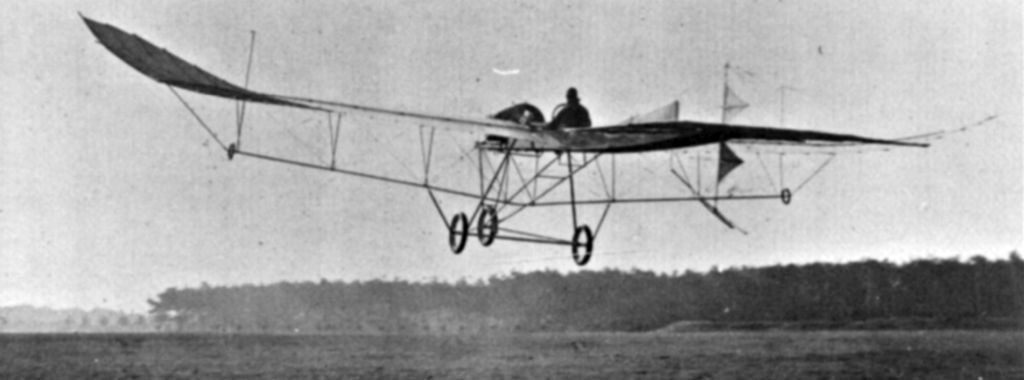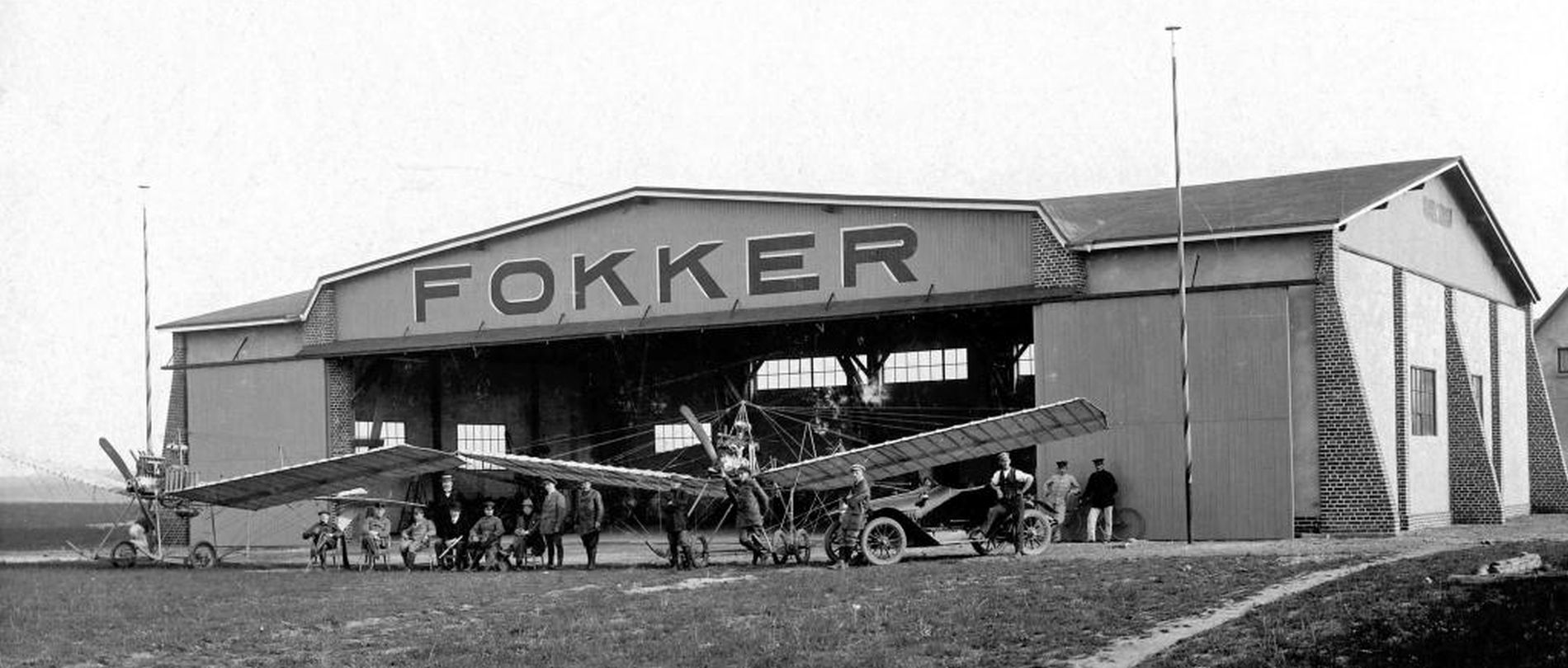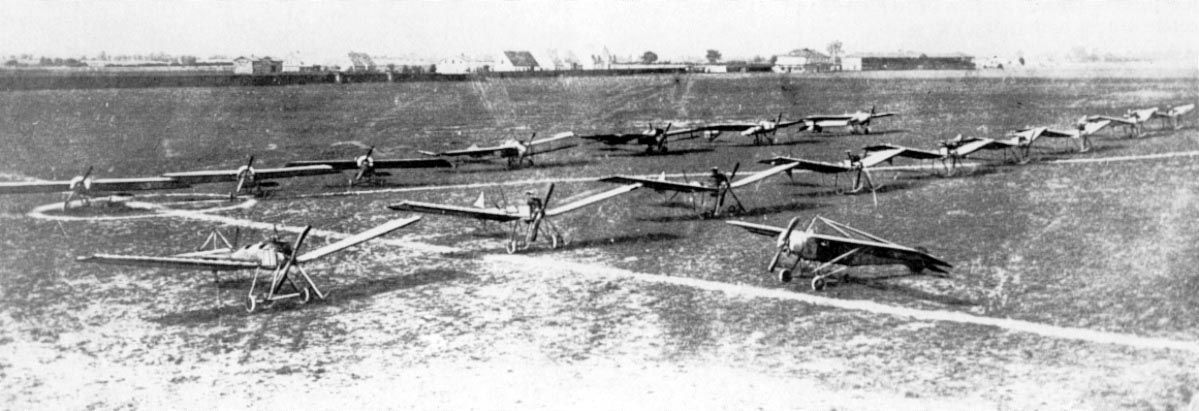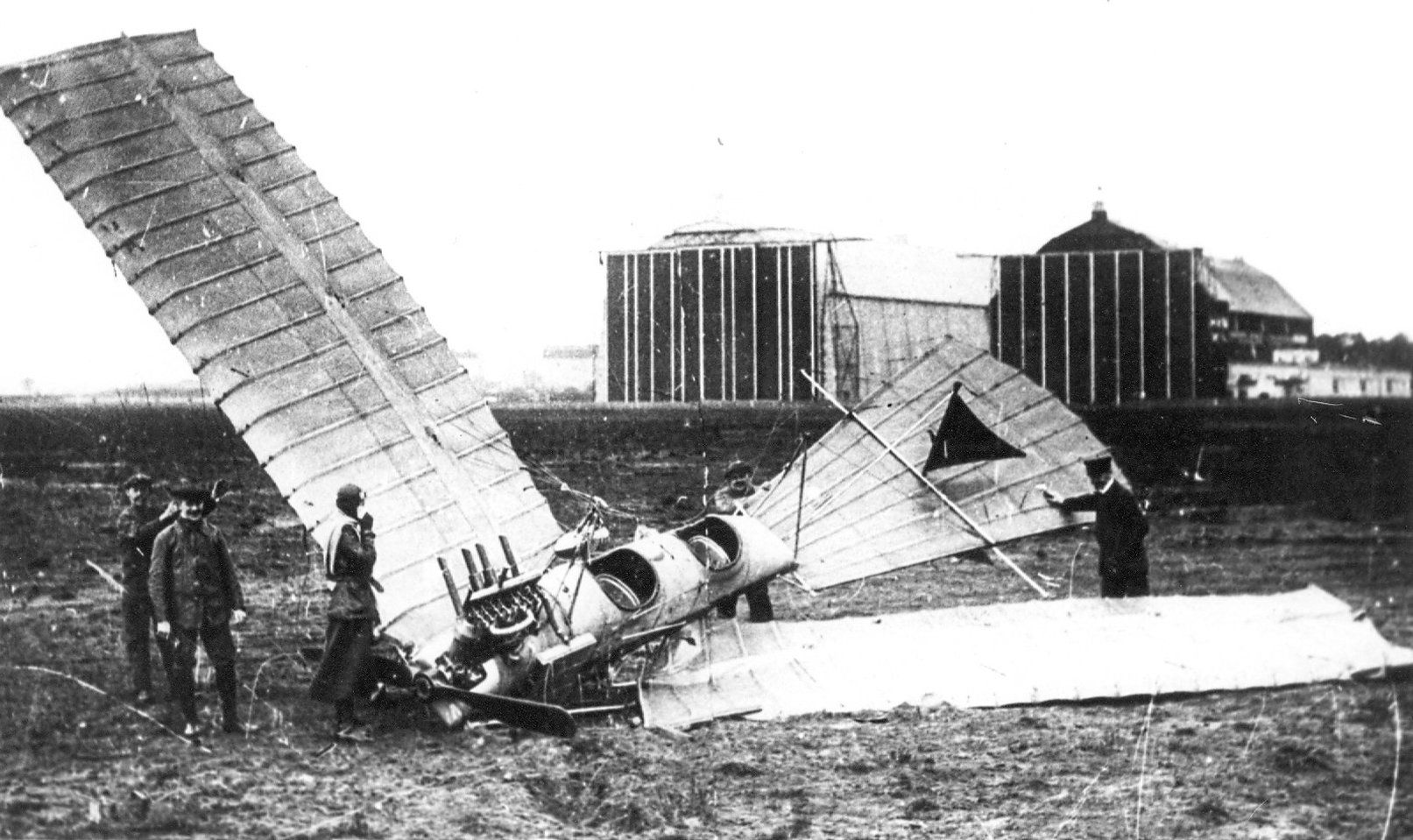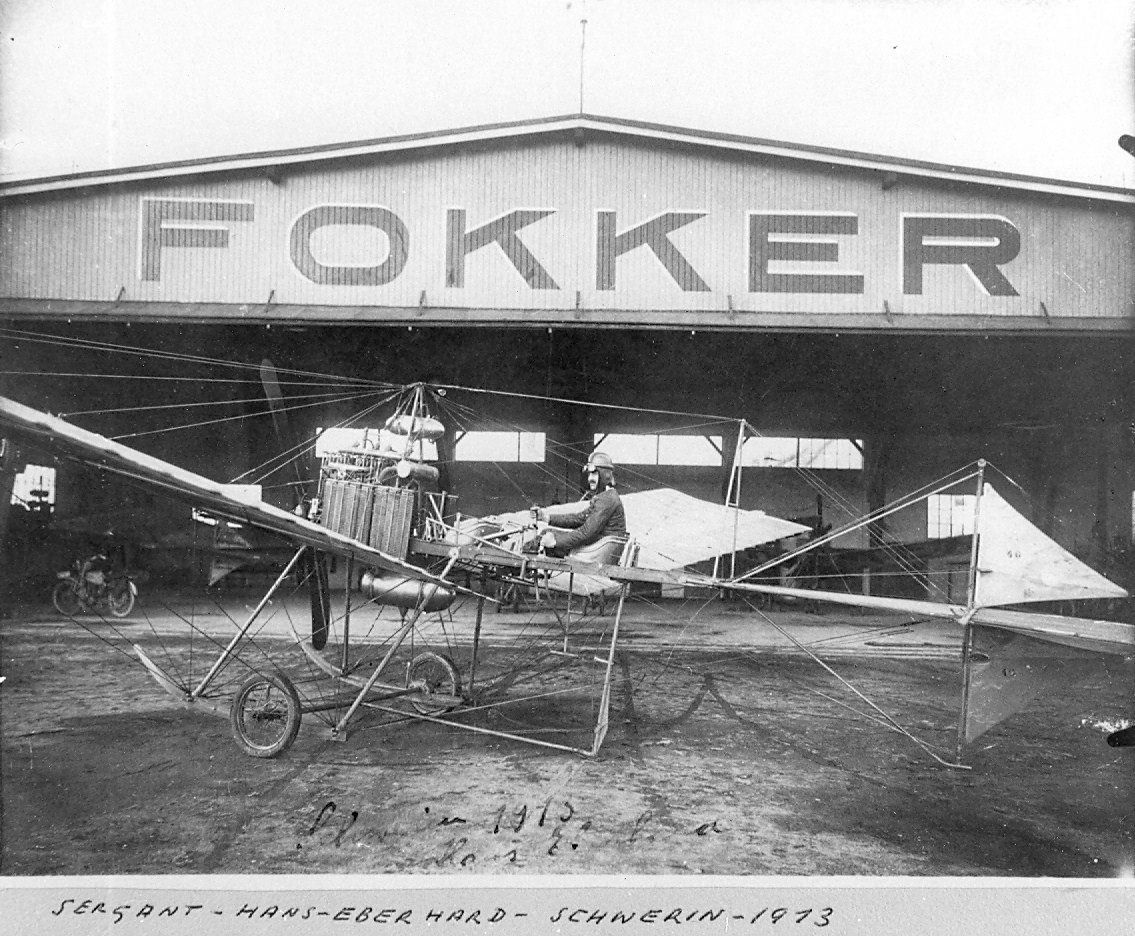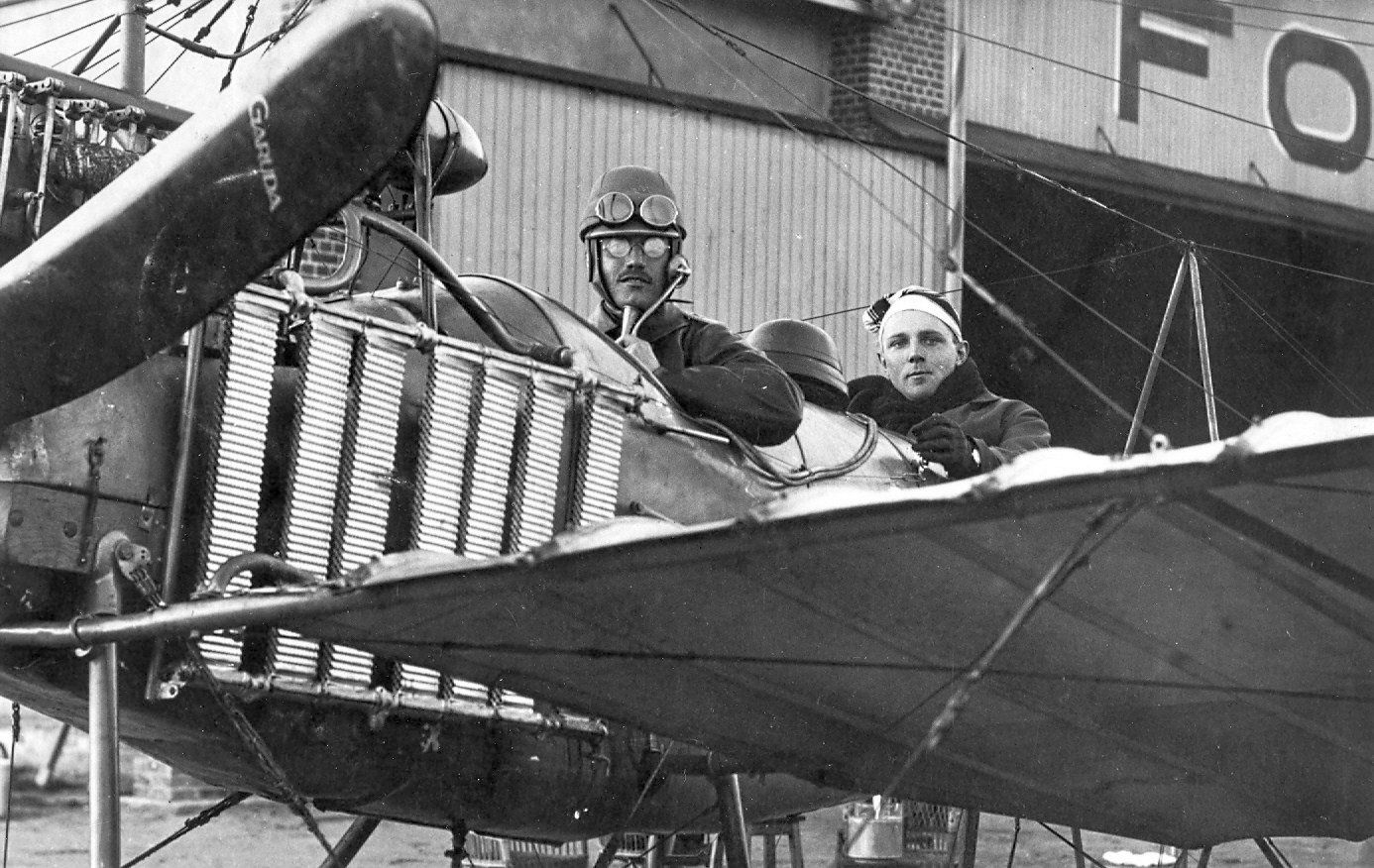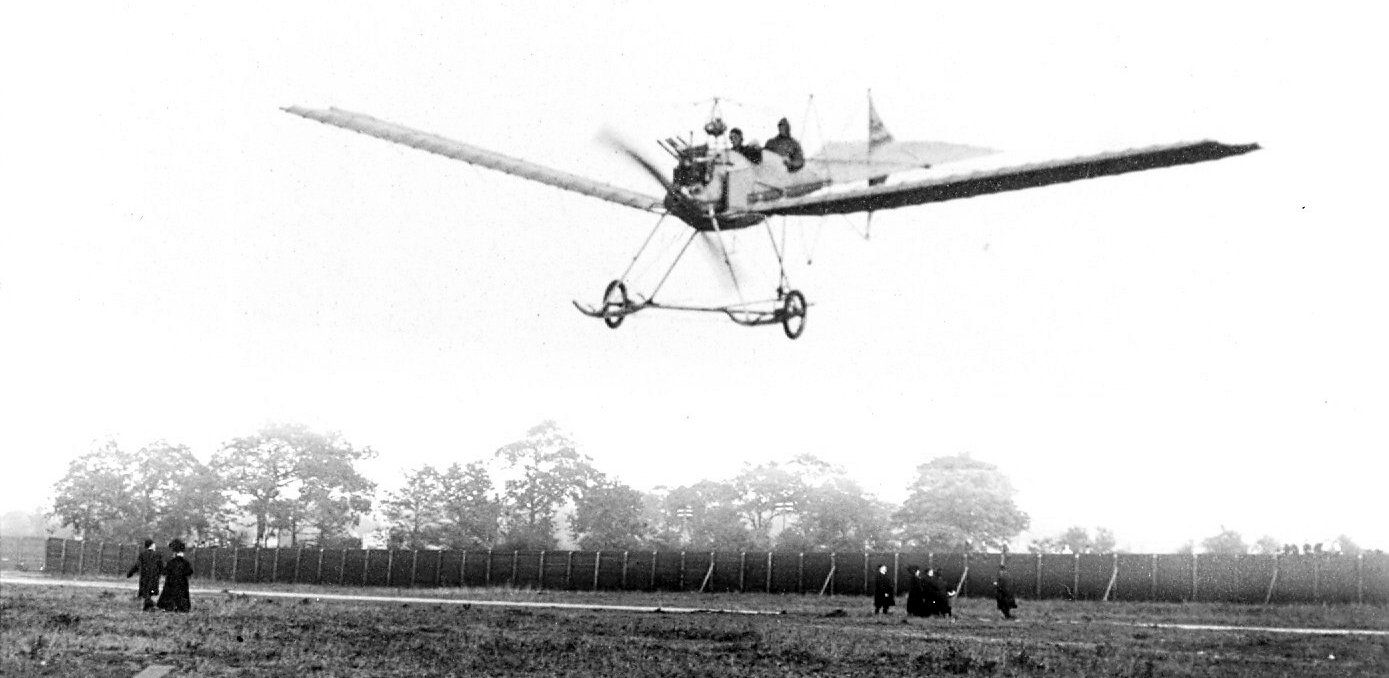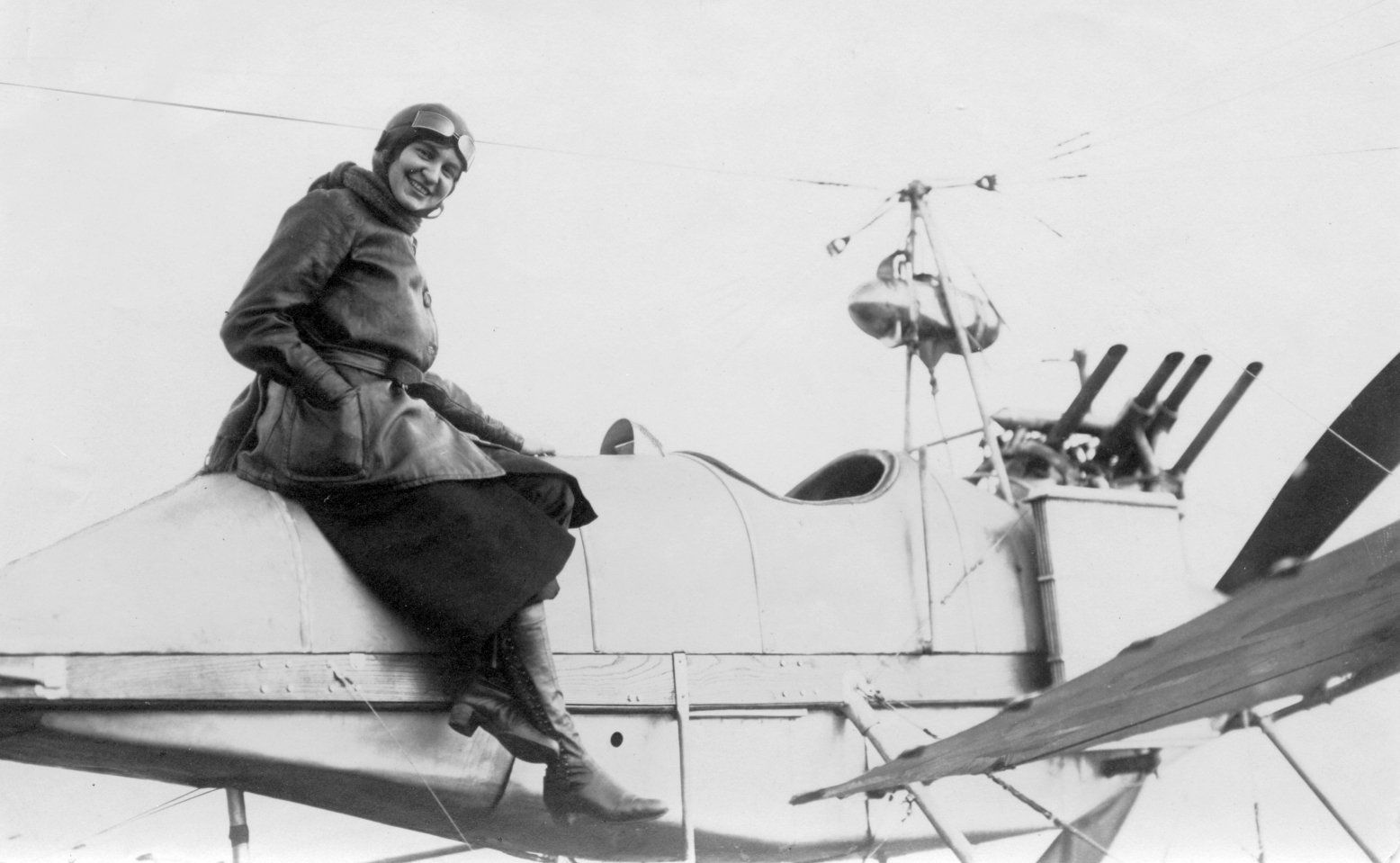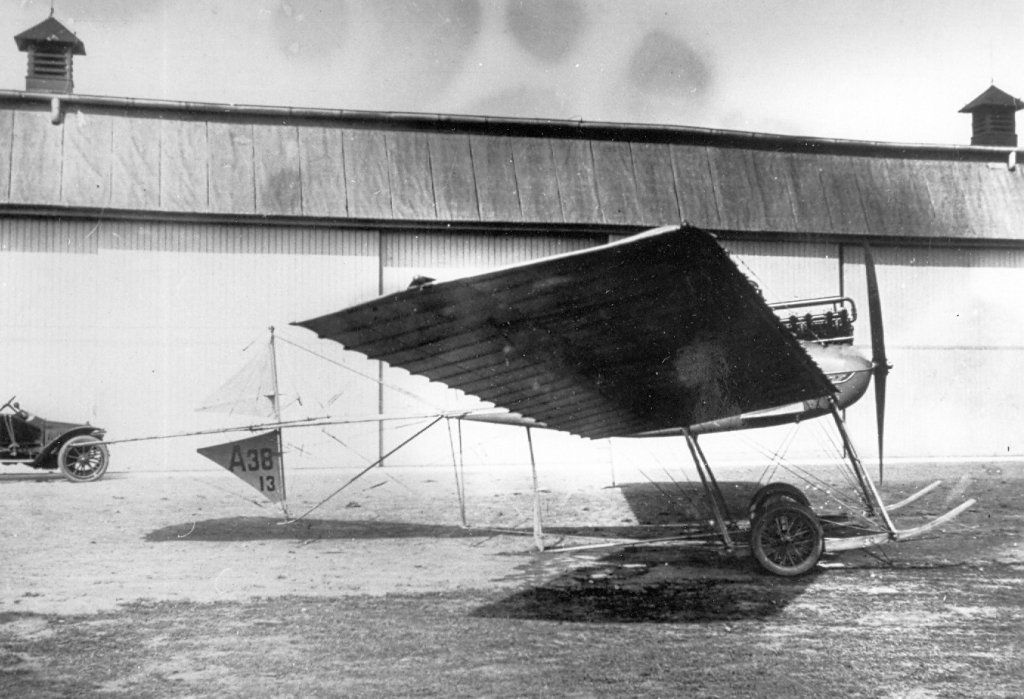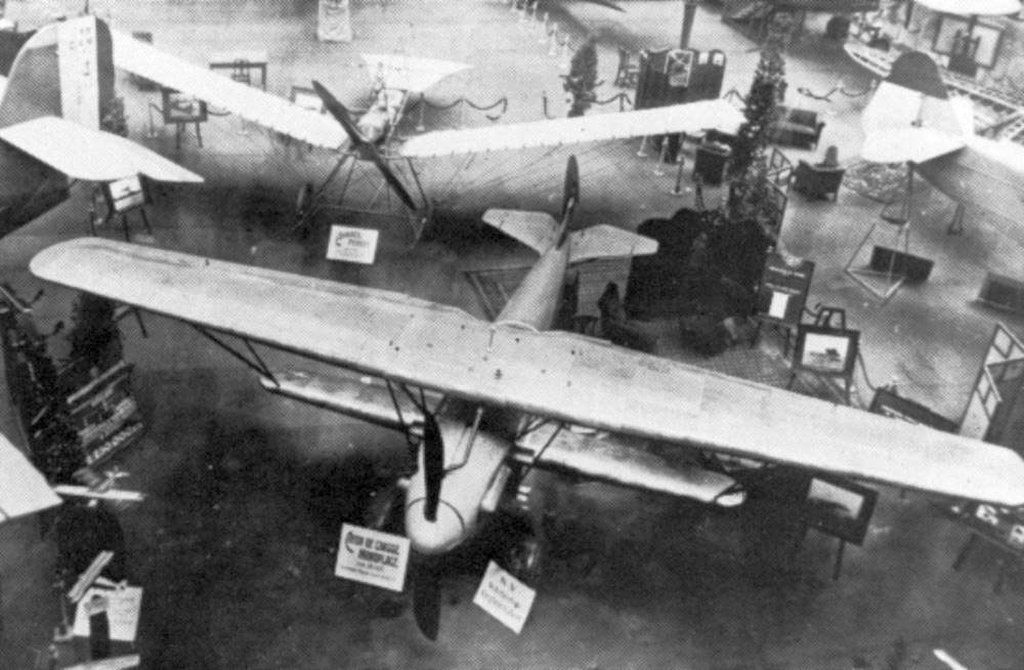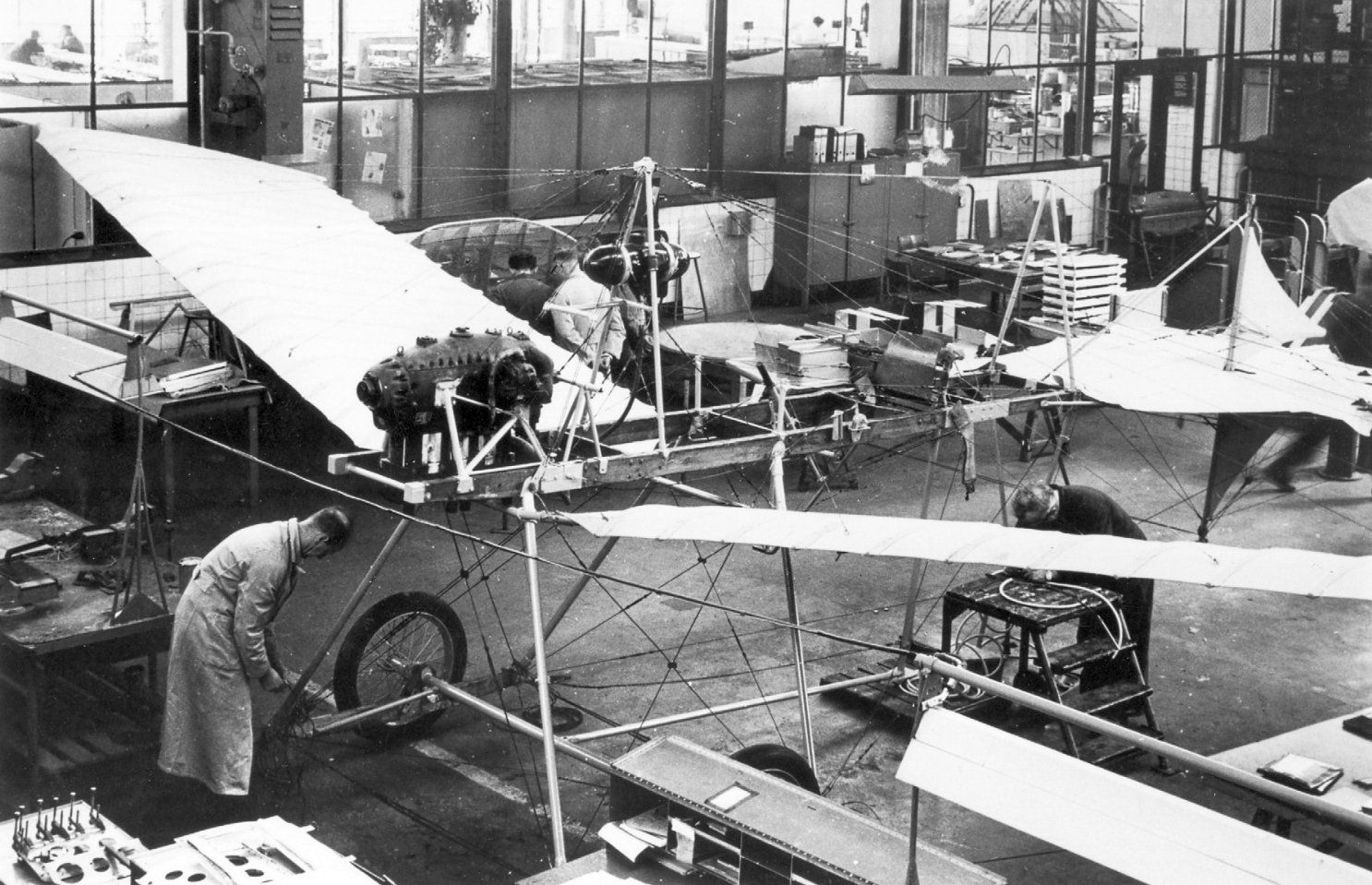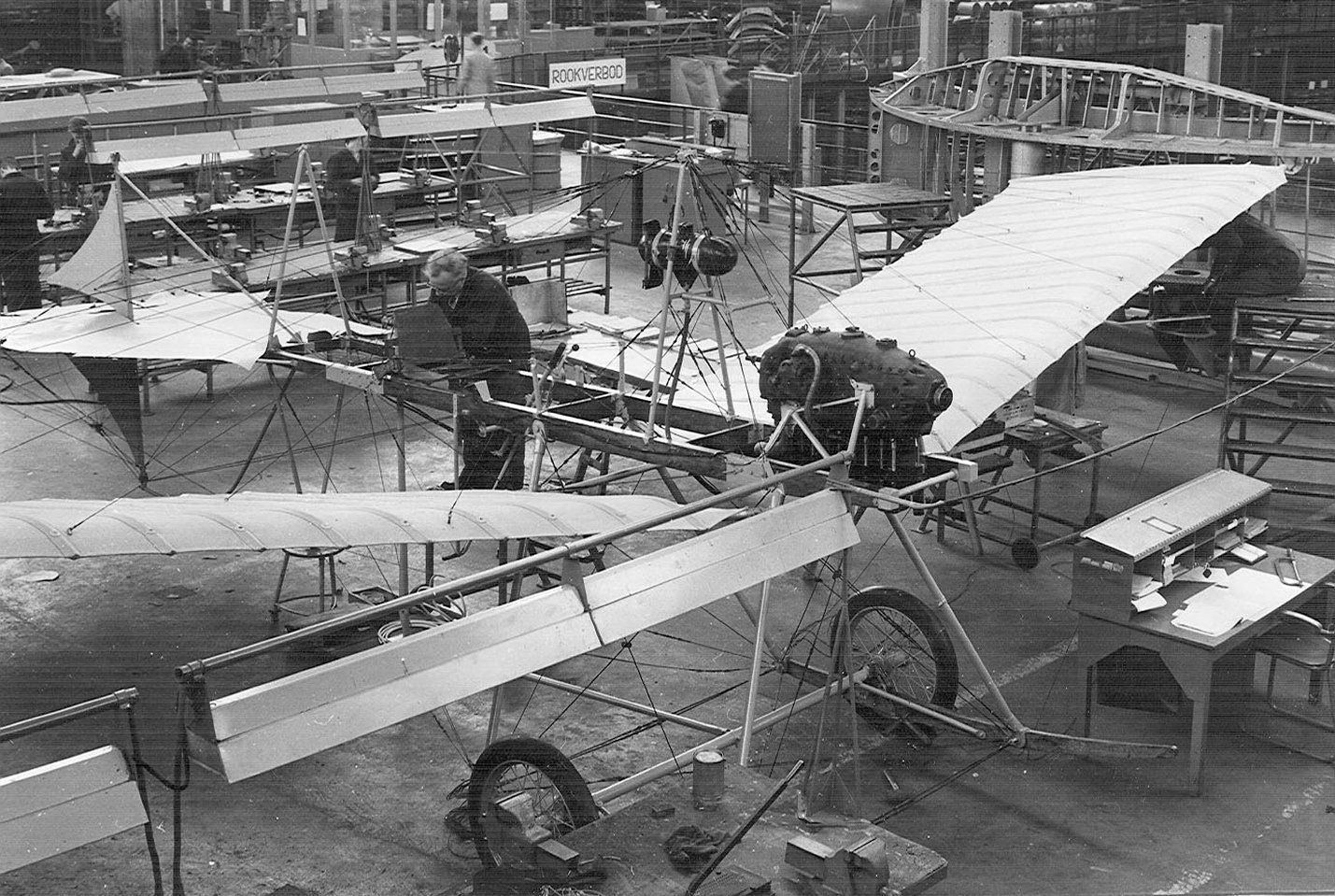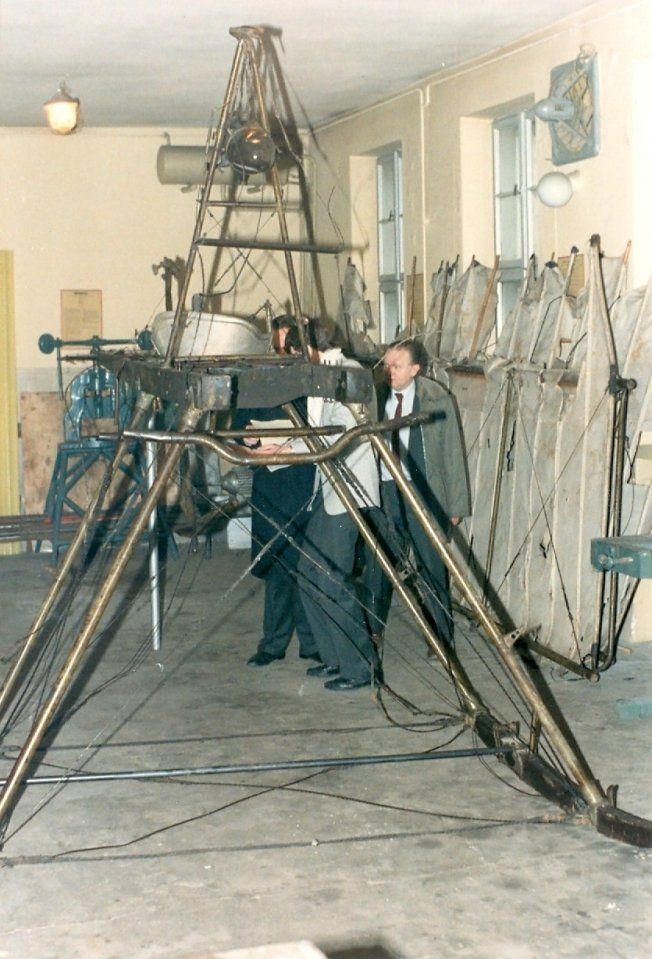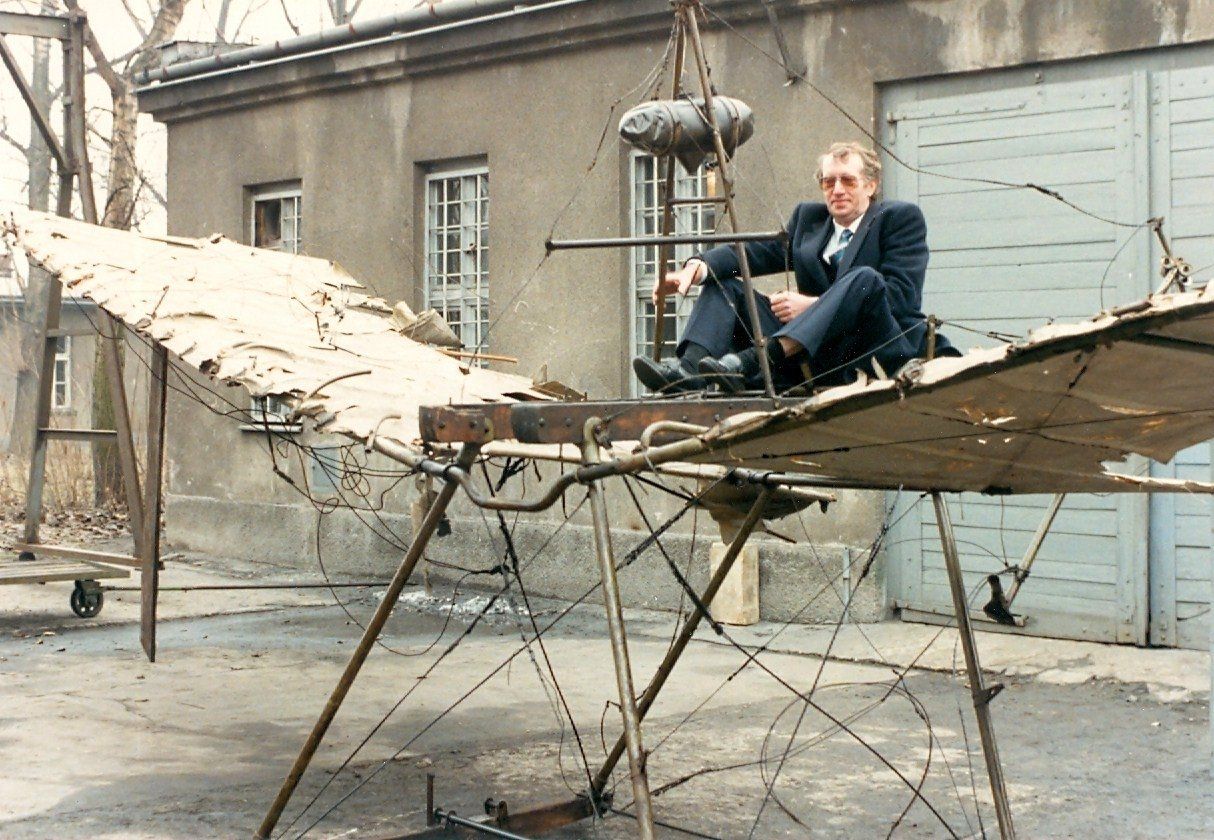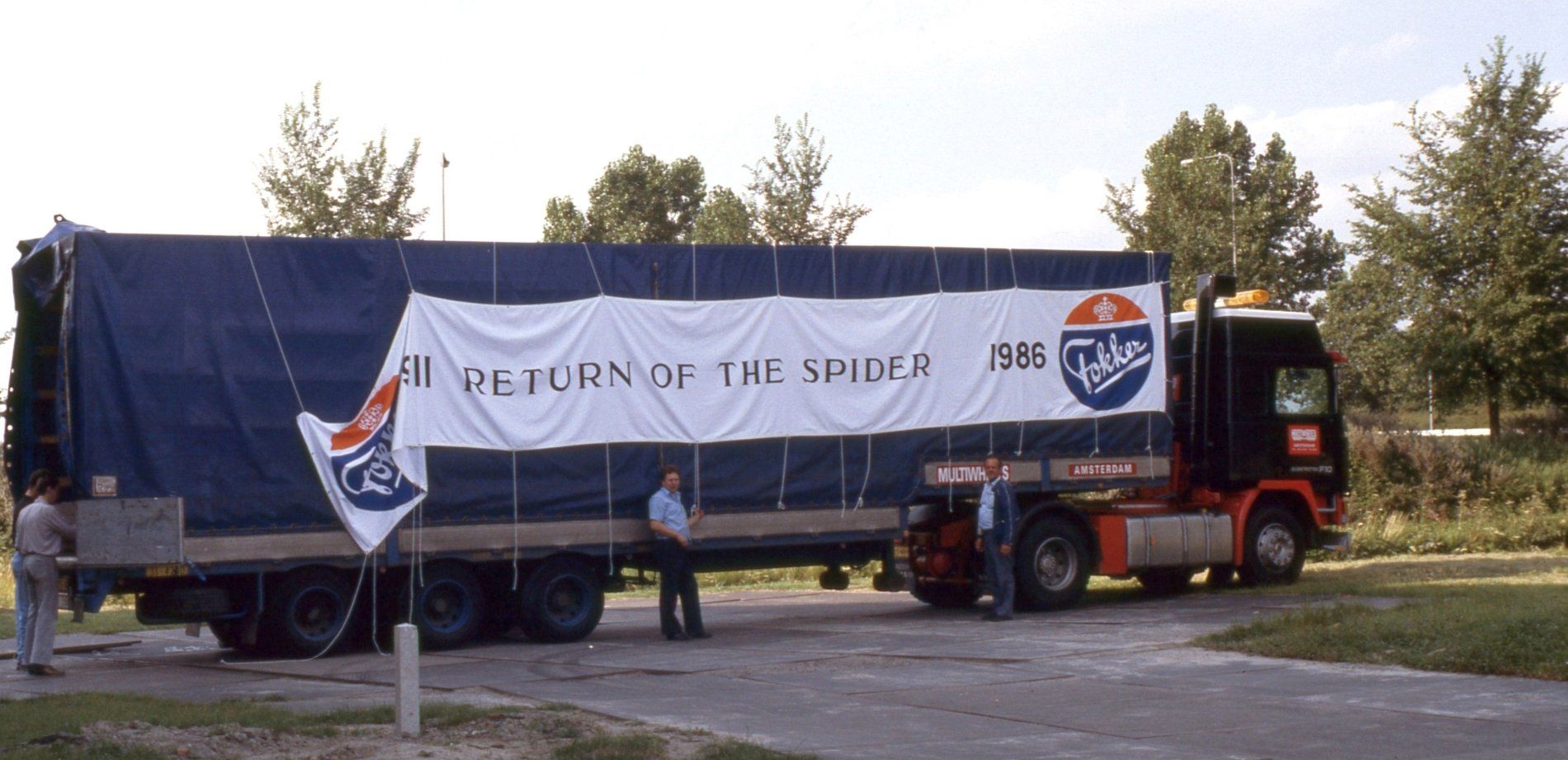The Fokker Spin (Spider) aircraft
Click on the photo to enlarge the photos
From 1910, the year of the construction of the first Spin, many articles were published about Anthony Fokker's first aircraft, the “Spin”.
Partly because most facts from this period are missing, many articles and book passages contadict each other.
Aircraft registrations, construction numbers and registrations in aviation registers were not yet relevant at that time.
For example, it is not known exactly how many Spiders were built, it is also sometimes unclear when a Spin, due to a number of changes, became an M (Militär flugzeug) type. Sometimes such a Spider also had a double type designation.
There was also a lot of experimentation with engines, one model first had an Argus engine of 70 hp, then a Renault of 100 hp and then another Argus, but then of 100 hp.
Even the still existing Fokker archive contains documents that contradict each other about the Spiders' account.
This also makes it difficult to describe the type designation of the Spiders.
From existing documentation by aviation journalist Henri Hegener (ϯ), the following list is the most obvious:
Spider 1, October 1910
Spider 2, May 1911
Spider 3, August 1911
1st Spin variant 1912
2nd Spin variant 1912
1st Spin variant 1913
2nd Spin variant 1913 (M-1)
3rd Spin variant 1913
Anthony Fokker left in 1909 from Haarlem to the “Ersten Deutschen Automobilfachschule” in Mainz, Germany. There was also an Aviatik department.
Here Anthony and his fellow students built the first Spider. Oberleutnant Franz von Daum was both a fellow student and the financier of the project,
The aircraft was equipped with a 50 hp Argus engine.
The plane is said to have only made a few jumps from the ground.
Partly because most facts from this period are missing, many articles and book passages contadict each other.
Aircraft registrations, construction numbers and registrations in aviation registers were not yet relevant at that time.
For example, it is not known exactly how many Spiders were built, it is also sometimes unclear when a Spin, due to a number of changes, became an M (Militär flugzeug) type. Sometimes such a Spider also had a double type designation.
There was also a lot of experimentation with engines, one model first had an Argus engine of 70 hp, then a Renault of 100 hp and then another Argus, but then of 100 hp.
Even the still existing Fokker archive contains documents that contradict each other about the Spiders' account.
This also makes it difficult to describe the type designation of the Spiders.
From existing documentation by aviation journalist Henri Hegener (ϯ), the following list is the most obvious:
Spider 1, October 1910
Spider 2, May 1911
Spider 3, August 1911
1st Spin variant 1912
2nd Spin variant 1912
1st Spin variant 1913
2nd Spin variant 1913 (M-1)
3rd Spin variant 1913
Anthony Fokker left in 1909 from Haarlem to the “Ersten Deutschen Automobilfachschule” in Mainz, Germany. There was also an Aviatik department.
Here Anthony and his fellow students built the first Spider. Oberleutnant Franz von Daum was both a fellow student and the financier of the project,
The aircraft was equipped with a 50 hp Argus engine.
The plane is said to have only made a few jumps from the ground.
In 1911 Fokker came into contact with the German aircraft manufacturer Jacob Goedecker who already built aircraft in Nieder-Walluf.
Goedecker taught Fokker the tricks of the trade and that is how Goedecker built the second Spin.
In the beginning, the designs came partly from Goedecker, with ideas from Fokker.
About 60 Spiders have been built at Goedecker.
After that, Fokker opened his aircraft company in Johannistahl.
In the beginning, Spiders were still produced at Goedecker, and were assembled in Johannistahl, followed by a first test flight.
Anthony Fokker taught himself to fly by also flying on Goedecker's aircraft.
On May 16, 1911, Fokker obtained his pilot's license.
Meanwhile, a number of Spiders and versions thereof were sold to the German army authorities.
Fokker had set up his own flying school where future military pilots were trained.
A number of private individuals had also purchased a Spider and in 1913 a demonstration was prepared in Indonesia, with two Spiders.
Goedecker taught Fokker the tricks of the trade and that is how Goedecker built the second Spin.
In the beginning, the designs came partly from Goedecker, with ideas from Fokker.
About 60 Spiders have been built at Goedecker.
After that, Fokker opened his aircraft company in Johannistahl.
In the beginning, Spiders were still produced at Goedecker, and were assembled in Johannistahl, followed by a first test flight.
Anthony Fokker taught himself to fly by also flying on Goedecker's aircraft.
On May 16, 1911, Fokker obtained his pilot's license.
Meanwhile, a number of Spiders and versions thereof were sold to the German army authorities.
Fokker had set up his own flying school where future military pilots were trained.
A number of private individuals had also purchased a Spider and in 1913 a demonstration was prepared in Indonesia, with two Spiders.
From Berlin to Soesterberg
On May 13, 1913, Fokker employees Bernard de Waal and Franz Küntner made a long-haul flight from Berlin to Soesterberg to interest the Dutch military authorities in the Fokker products.
Also after that, in the first week of September 1911, Fokker gave several demonstrations.
There is a memorial stone in Haarlem where the Spin met Fokker started.
On May 13, 1913, Fokker employees Bernard de Waal and Franz Küntner made a long-haul flight from Berlin to Soesterberg to interest the Dutch military authorities in the Fokker products.
After a number of stopovers, for fuel, oil, food, and some delay, the aircraft, a 2nd Spin variant 1913, arrived in Soesterberg after a total time of about 26 hours.
Flying in Haarlem
Famous is of course the flight on August 31, 1911 in Haarlem on the occasion of Queen's Day, during which Fokker flew in a Spider around the church tower of the Sint Bavo church.
Also after that, in the first week of September 1911, Fokker gave several demonstrations.
There is a memorial stone in Haarlem where the Spin met Fokker started.
Spider replica 1936
In 1936, a replica of the Spider was built in the Fokker factory in Amsterdam North on the occasion that Anthony Fokker had obtained his pilot's license 25 years ago.
At the then Schiphol (East) it made several flights, after which it was exhibited at numerous aviation events in the Netherlands.
In 1960, this replica underwent a major overhaul in the Fokker factory, which was now located at Schiphol-East.
It was then exhibited in the Aeroplanorama at Schiphol-East, located in the Atom building there.
Subsequently, the Spin moved to the Aviodome, where it was brought back to the Fokker factory in 1988 to make it flyworthy again due to the Fokker factory's 70th anniversary in 1989.
After being used statically for the celebration of Fokker's anniversary, this 54-year-old Spider made a flight on March 18, 1990 at the (military) airport of Eindhoven.
Fokker test pilot Edwin Boshof has made a few flights with this Spin, for example for a TV documentary of the TROS.
After these activities, the Spin has been included in the Aviodome collection again and is now part of the Aviodrome collection.
In the meantime, the replica Spin was also exhibited in the Sint Bavo church in Haarlem in 2011 for the celebration that it was 100 years ago that Fokker flew around the tower of the Sint Bavo.
In the first months of its existence, this Spin was equipped with an 80 hp. Hirth
HM 60 R 80 engine, then the heavier Hirth HM 504 A of 105 hp. fitted.
Both engines each had their own propeller.
In 1936, a replica of the Spider was built in the Fokker factory in Amsterdam North on the occasion that Anthony Fokker had obtained his pilot's license 25 years ago.
At the then Schiphol (East) it made several flights, after which it was exhibited at numerous aviation events in the Netherlands.
In 1960, this replica underwent a major overhaul in the Fokker factory, which was now located at Schiphol-East.
It was then exhibited in the Aeroplanorama at Schiphol-East, located in the Atom building there.
Subsequently, the Spin moved to the Aviodome, where it was brought back to the Fokker factory in 1988 to make it flyworthy again due to the Fokker factory's 70th anniversary in 1989.
After being used statically for the celebration of Fokker's anniversary, this 54-year-old Spider made a flight on March 18, 1990 at the (military) airport of Eindhoven.
Fokker test pilot Edwin Boshof has made a few flights with this Spin, for example for a TV documentary of the TROS.
After these activities, the Spin has been included in the Aviodome collection again and is now part of the Aviodrome collection.
In the meantime, the replica Spin was also exhibited in the Sint Bavo church in Haarlem in 2011 for the celebration that it was 100 years ago that Fokker flew around the tower of the Sint Bavo.
In the first months of its existence, this Spin was equipped with an 80 hp. Hirth
HM 60 R 80 engine, then the heavier Hirth HM 504 A of 105 hp. fitted.
Both engines each had their own propeller.
The 'Poland Spider'
After many wanderings of a Fokker Spin 3 from 1911/13, this original Spin van from Poland ended in the Netherlands on 1-8-1986.
The Spider in question had come to the Netherlands from Germany with the famous smuggling train in 1919 and later stood in a warehouse in the Fokker factory in Amsterdam North.
In the 1930s, this Spin was included in the TH study collection in Delft for a while.
Strangely enough, this Spin was not restored in 1936 for the kite anniversary of Anthony Fokker, but the aforementioned replica was built there.
In 1943, the production of Fokker for the German occupier was spread over Amsterdam and surroundings. This Spider ended up in the Hirsch building on Amsterdam's Leidseplein.
After that, the Spin was confiscated by the German occupier and transferred to Berlin.
The plane was damaged in a bombing and then transferred to Poland where it ended up in the aviation museum in Krakow.
In 1986, the Fokker management commissioned PR employee Gerard Schavemaker to bring the Spin to the Netherlands.
After many negotiations, by Dutch and Polish authorities at ministerial and embassy level, this Spider, or rather the remains of it, came to the Netherlands by truck.
After being stored at the Aviodome, the Spin was presented on 1-8-1986 in a hangar of the Fokker factory at Schiphol-East.
After the presentation, the device was exhibited for some time at the Aviodome, after which this Spin was also restored at Fokker, mainly by former pensioners from Fokker.
The aircraft never flew after the restoration, although this was the goal.
The Spin provided with a 70 Hp. Renault V8 cylinder engine had a center of gravity problem.
According to some retirees from the restoration program, this Spider was probably previously used for taxi trials by prospective pilots.
After investigation, it appeared that the Polish government had donated the device to the state of the Netherlands, making them the official owner.
This Spin is also included in the Aviodrome collection.
After many wanderings of a Fokker Spin 3 from 1911/13, this original Spin van from Poland ended in the Netherlands on 1-8-1986.
The Spider in question had come to the Netherlands from Germany with the famous smuggling train in 1919 and later stood in a warehouse in the Fokker factory in Amsterdam North.
In the 1930s, this Spin was included in the TH study collection in Delft for a while.
Strangely enough, this Spin was not restored in 1936 for the kite anniversary of Anthony Fokker, but the aforementioned replica was built there.
In 1943, the production of Fokker for the German occupier was spread over Amsterdam and surroundings. This Spider ended up in the Hirsch building on Amsterdam's Leidseplein.
After that, the Spin was confiscated by the German occupier and transferred to Berlin.
The plane was damaged in a bombing and then transferred to Poland where it ended up in the aviation museum in Krakow.
In 1986, the Fokker management commissioned PR employee Gerard Schavemaker to bring the Spin to the Netherlands.
After many negotiations, by Dutch and Polish authorities at ministerial and embassy level, this Spider, or rather the remains of it, came to the Netherlands by truck.
After being stored at the Aviodome, the Spin was presented on 1-8-1986 in a hangar of the Fokker factory at Schiphol-East.
After the presentation, the device was exhibited for some time at the Aviodome, after which this Spin was also restored at Fokker, mainly by former pensioners from Fokker.
The aircraft never flew after the restoration, although this was the goal.
The Spin provided with a 70 Hp. Renault V8 cylinder engine had a center of gravity problem.
According to some retirees from the restoration program, this Spider was probably previously used for taxi trials by prospective pilots.
After investigation, it appeared that the Polish government had donated the device to the state of the Netherlands, making them the official owner.
This Spin is also included in the Aviodrome collection.



